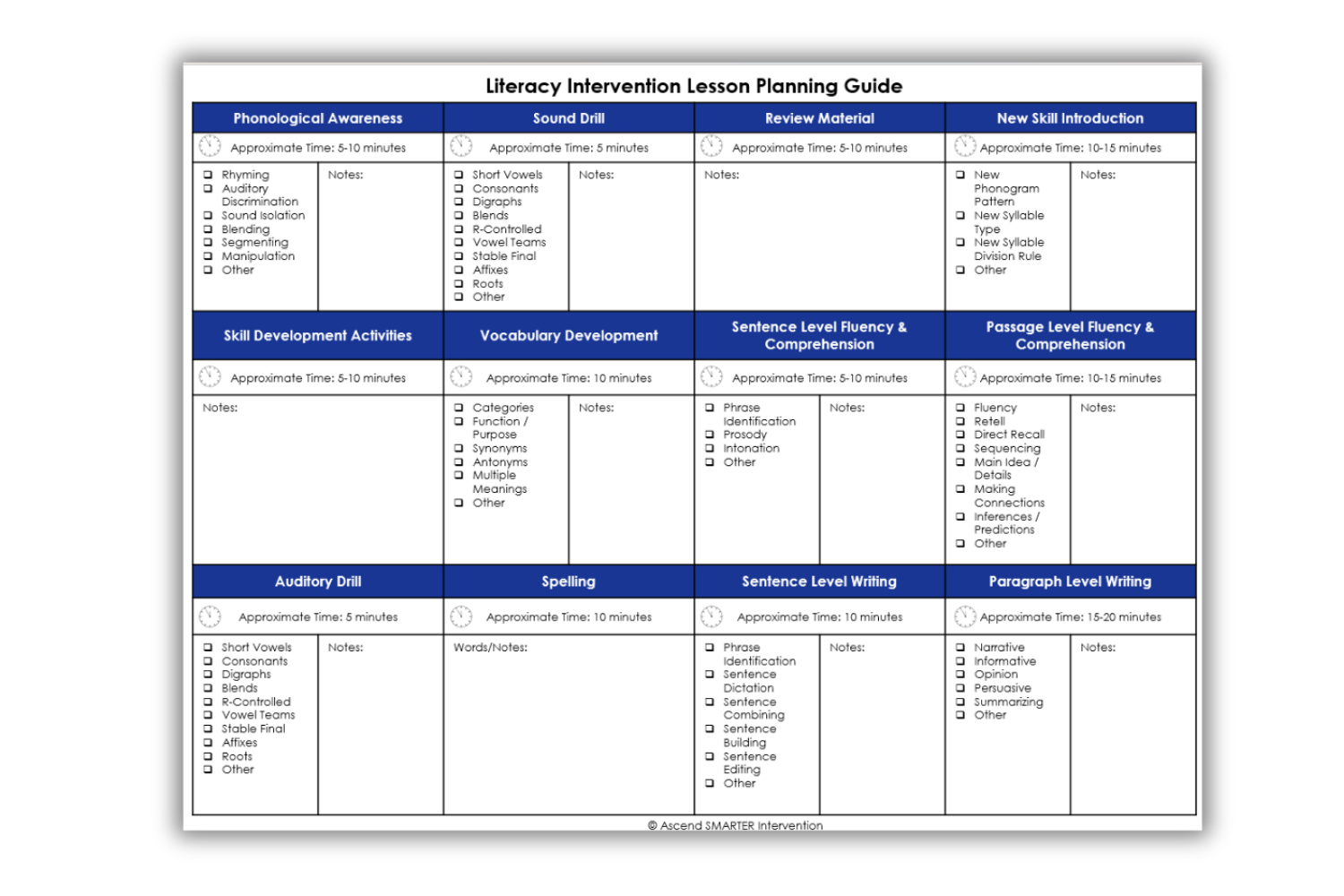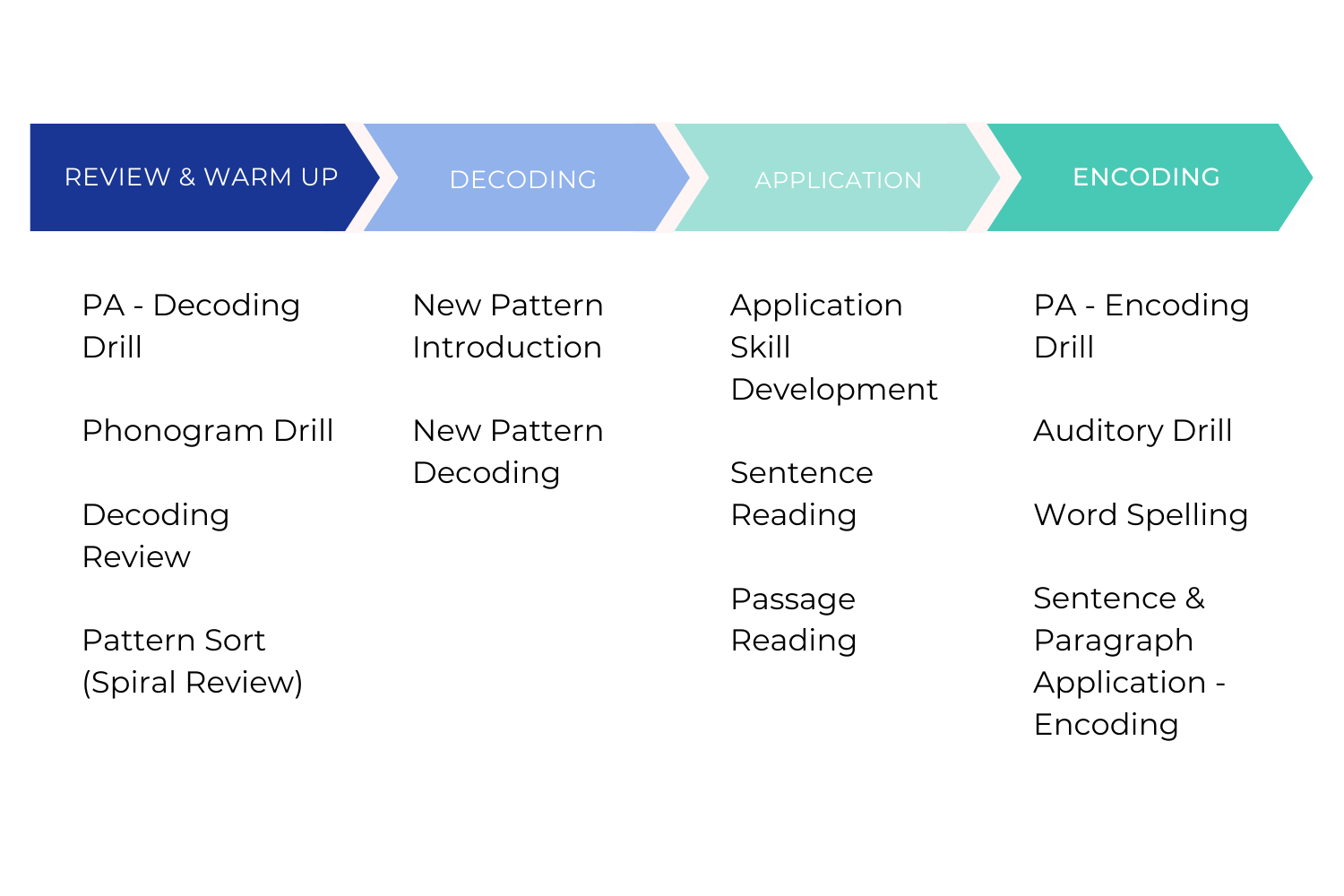How to Plan Your Literacy Intervention Lessons - Intervention Tip of the Week
When it comes to literacy intervention, one of the biggest questions teachers face is: “What should I actually do in my lessons?”
If you’ve been wondering this lately, don’t worry! You are not alone! It’s all about knowing how to structure each lesson so your students can connect the dots between the concepts you’re teaching.
And in order to do that, we need to focus on what we call micro-planning.
Micro-planning is all about planning our individual lessons (as opposed to focusing on how everything fits together over time). We start by asking three simple questions to guide the planning of each lesson.
Step 1: How Much Time Do I Have?
Think about your overall window with this group of students. Do you have them for a handful of lessons? A full semester? An entire school year? The amount of time you have influences how quickly you’ll need to move through concepts.
Step 2: How Long Is Each Block?
How long do you meet with students in each session? Is it 30 minutes? 45 minutes? Do you see them two times a week or every day?
The length and frequency of your sessions determine how much you can reasonably fit into a single lesson. A 20-minute block might focus more tightly on a review and one new concept, while a 45-minute block gives room to layer in additional skill application practice.
Step 3: How Will I Fit the Skills Into My Timeline?
Once you know your timeframe and session length, the next step is deciding how to fit the essential literacy components into each lesson. Every lesson should touch on the 5 Core Components of Literacy (plus writing):
Phonological Awareness
Phonics
Vocabulary
Fluency
Comprehension
Writing
But that doesn’t mean every component will get the same weight every day. Some days may lean heavily on phonics, others on comprehension and application. The key is weaving them together systematically, not leaving any piece out for multiple days or weeks.
Once we’ve answered those three questions, we can start to build out our own -
Predictable Lesson Structure
That predictable lesson structure is where the micro-planning comes in. Our predictable lesson structure might look something like this, depending on our students’ needs.
Review & Warm Up (10-15 minutes)
Phonological Awareness – Quick oral drill to practice manipulating sounds.
Sound Practice – Phonogram drills (students see a letter or combination and respond with the sound).
Review – Decoding with previously taught patterns, plus sorting activities (e.g., closed vs. open syllables).
Decoding (15-25 minutes)
New Skill Introduction – Explicit teaching of a sound, spelling pattern, or rule in isolation (e.g., AI says /ā/).
Practice at the Word Level – Applying the new concept in words (e.g., rain, train, paint).
Application (15-25 minutes)
Application Skill Development – Extending the rule into contexts such as vocabulary or usage (e.g., distinguishing rain vs. reign).
Connected Text – Sentences, passages, or short stories for applying skills in context, paired with vocabulary and fluency work.
Encoding (30-60 minutes)
Auditory Drill – Students hear a sound and write the matching letter or pattern.
Spelling and Sentence Construction – Encoding practice through words and sentences.
Connected Text Writing – Expanding into sentences or short paragraphs to reinforce syntax and spelling patterns.
This lesson flow makes sure instruction moves from sound → syllable → word → connected text — always circling back to strengthen both decoding and encoding.
Want to See This in Action?
We walk through this lesson-planning process step by step in our free Spotlight PDs:
If you work in the elementary setting - Check out our training, Delivering Effective Elementary Literacy Intervention: The 5-Step Framework for Grades K-6 to learn more and get free resources you can use to support your instruction!
If you work in the secondary setting - Check out Delivering Effective Secondary Literacy Intervention: The 5-Step Framework for Grades 6–12 to learn more and get free resources you can use to support your instruction this year!
Both trainings give you the tools you need to make the most of every session, so you never wonder “what should I do today?” again.




